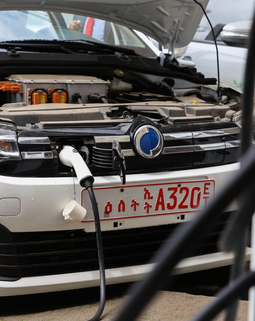Ethiopia is set to revolutionize its nascent auto industry with an ambitious plan to become Africa's foremost car manufacturer in the next two decades. This article delves into Ethiopia's strategic goals, emphasizing its concerted efforts to convert local assemblers into a network of thriving factories.
Industrial Transformation Blueprint
As part of a broader plan to transform Ethiopia into an industrial center, the government envisions constructing new industrial zones around Addis Ababa and Mekelle. The focus is elevating the existing network of local assemblers to position Ethiopia as a major player in the continent's automotive landscape.
Current Landscape: Ethiopia's Modest Auto Production
Presently, Ethiopia produces approximately 8,000 commercial and other vehicles annually, with a quarter dedicated to cars. The country's automotive executives express the potential for increased production if they could secure additional foreign exchange to import kits in larger quantities.
Despite being a minnow compared to South Africa and Morocco, Ethiopia aims to capitalize on its economic growth and infrastructural advancements.
Chinese Collaboration: Key to Ethiopia's Auto Aspirations
Chinese car firms, closely aligned with Ethiopia's state-led economic model, play a pivotal role in the nation's vehicle manufacturing plans. The affordability and marketing support provided by Chinese car kits has positioned them as valuable partners in Ethiopia's journey to boost its automotive sector.
Sourcing Dollars and Quality Concerns
Ethiopian assemblers, grappling with sourcing dollars for importing kits and reassuring consumers about quality, face hurdles in their quest for growth. The nation's modest foreign reserves and currency controls pose challenges, yet the industry's potential for growth remains high.
Tax Incentives: Fostering Local Automotive Industry
Ethiopia offers tax breaks to locally assembled cars to encourage the burgeoning industry when the local input exceeds 10 percent. This initiative aims to promote the growth of the automotive sector and attract further investment.
Shift to Greater Local Input
While the industry relies on "semi-knockdown" kits, Ethiopia aims to transition to "complete knockdown" kits within five years. This shift towards greater local input is crucial for the industry's evolution, reducing dependency on imported components.
Sourcing Dollars a Major Challenge
One of the significant constraints faced by Ethiopia's car industry is the scarcity of foreign exchange for importing kits. Industry insiders highlight the challenges in obtaining sufficient dollars from banks, impacting production capacities and overall growth.
Ethiopia's Determination to Thrive
Despite challenges, Ethiopia's auto industry remains determined to thrive, with plans to make its models more attractive to consumers through continuous upgrades. As the nation navigates its journey towards becoming Africa's leading car manufacturer, collaboration with Chinese partners, addressing currency constraints, and enhancing local production capabilities will play pivotal roles in shaping the future of Ethiopia's automotive landscape.





